New Mexico Youth Risk and Resiliency Survey and Healthy Kids Colorado Survey
Welcome
The New Mexico Youth Risk and Resiliency Survey, or NM YRRS, is a CDC funded school-based survey of middle and high school students. The survey helps to characterize adolescent health behaviors, as well as resiliency, or protective factors. The NM YRRS is made possible by a collaborative partnership between the New Mexico Department of Health (DOH), the New Mexico Public Education Department (PED), the University of New Mexico Prevention Research Center (UNM PRC), and the Albuquerque Area Southwest Tribal Epidemiology Center (AASTEC).
The Healthy Kids Colorado Survey (HKCS) is Colorado’s widely administered survey on the health and well-being of young people. The purpose of this survey is to better understand youth health and the factors that help young people make healthy choices. Much like the NM YRRS, the HKCS is aligned with the CDC’s Youth Risk Behavior Survey (YRBS).
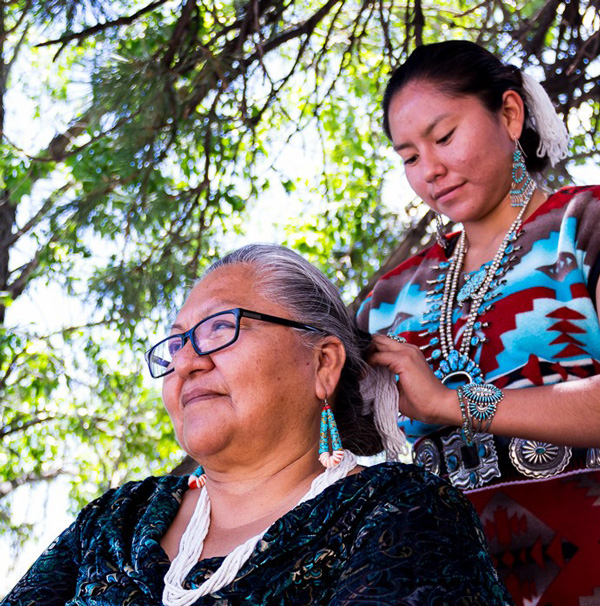
AASTEC’s Involvement
- Each survey year, AASTEC identifies schools in New Mexico that serve a high rate of American Indian/Alaska Native students. These schools are generally on, or near, tribal communities and include public, charter, tribal, and Bureau of Indian Education (BIE) schools. At these specific schools, an oversample (or census) of the NM YRRS is administered. This means that all 6-12 grade students are given the opportunity to complete the survey.
- The aim of the AASTEC oversample project is to ensure that American Indian students are adequately represented in the results of the NM YRRS. Employing an oversample technique ensures that the NM YRRS data is representative of American Indian/Alaska Native youth, and therefore, more useful to tribal communities and tribal-serving organizations.
- The AASTEC oversample project began in 2007, and as of 2019, 44 high school and middle schools participated in the oversample. Through the AASTEC oversample project, the number of American Indian/Alaska Native students represented within the NM YRRS state sample has roughly doubled.
- AASTEC works with the Colorado School of Public Health to support administration of the Healthy Kids Colorado Survey at schools serving tribal communities in Southwest Colorado (Region 9).
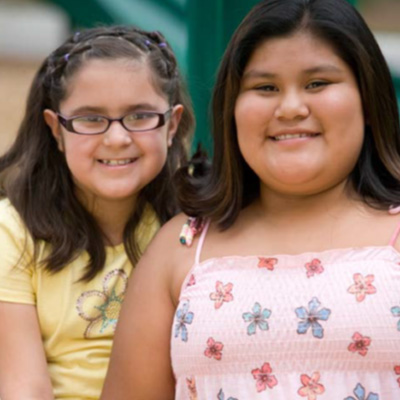
For both the New Mexico and Colorado surveys, students in grades 6-12 voluntarily participate in the survey during the Fall of odd-number years.
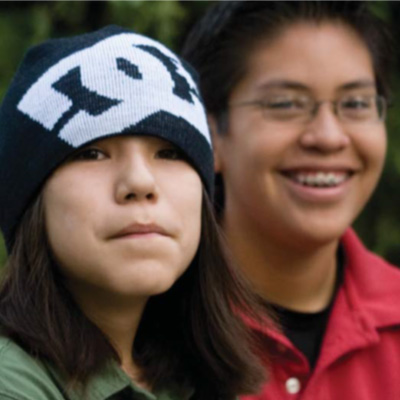
Topic areas include personal safety, mental health, and resiliency, among many others. The resiliency, or protective factors, topic area is a unique aspect of the surveys and provides more information about family, peer, school, and community support.
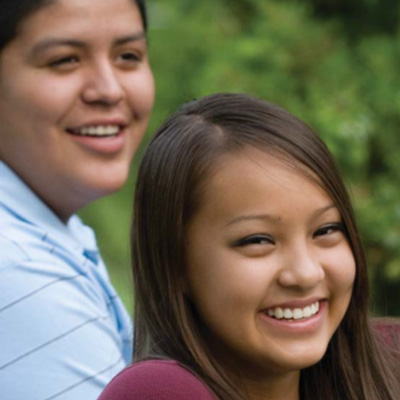
AASTEC develops fact sheets, state-level and school-specific reports, presentations, and other materials to support schools that participate in the NM YRRS and the HKCS. AASTEC has access to HKCS data for the Southern Colorado Tribal Area only and therefore, only a region-specific report is generated with HKCS data.
Data Highlights
2021 High School New Mexico (NM) Youth and Risk Resilience
(click image to download full PDF)
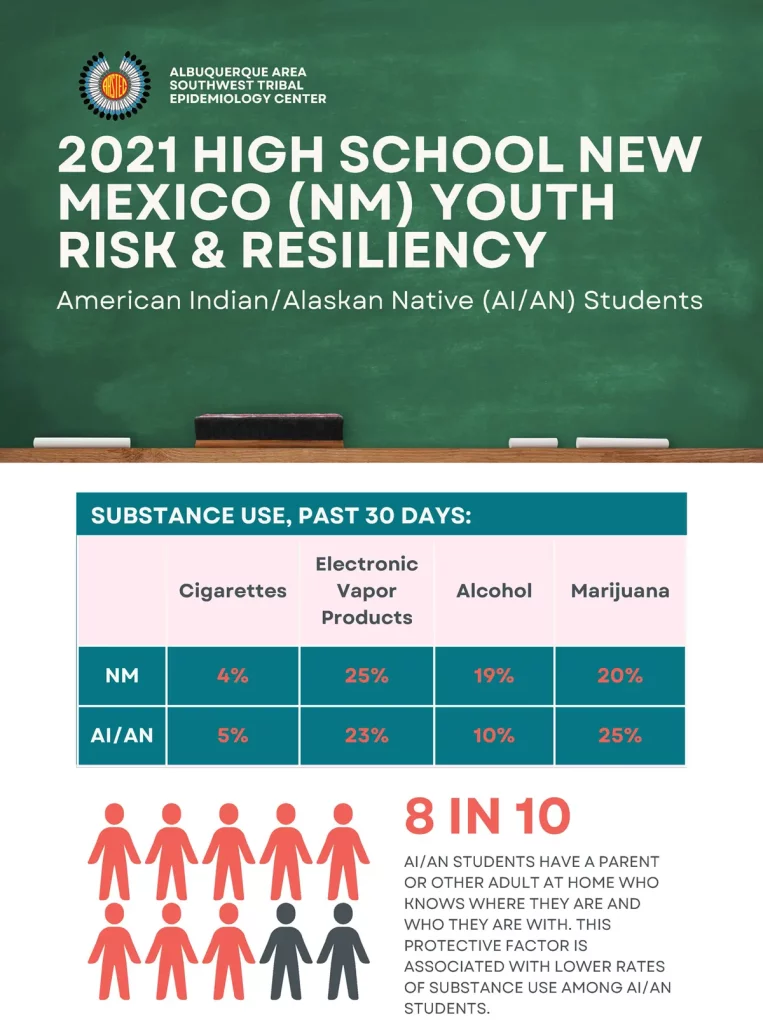
2021 Middle School New Mexico (NM) Youth and Risk Resilience
(click image to download full PDF)
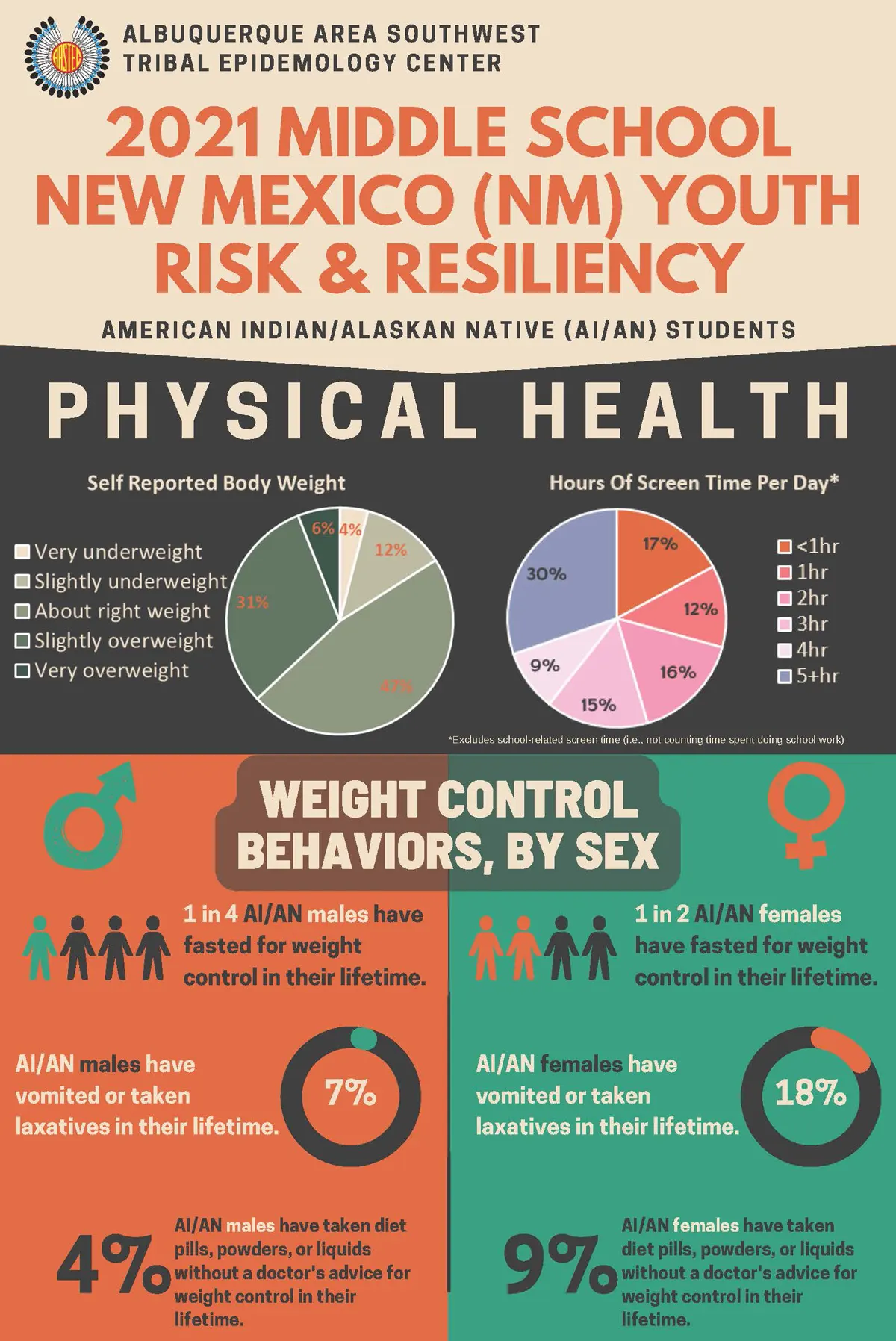
Reports & Publications
2023
- 2023 New Mexico Youth Risk and Resiliency Survey Middle School Report
- 2023 New Mexico Youth Risk and Resiliency Survey High School Report
- 2023 Healthy Kids Colorado Survey Middle School Report
- 2023 Healthy Kids Colorado Survey High School Report
2021
- 2021 New Mexico Youth Risk and Resiliency Survey Middle School Report
- 2021 New Mexico Youth Risk and Resiliency Survey High School Report
- 2021 Marijuana Use Among American Indian Youth in New Mexico
- 2021 Alcohol Use Among American Indian Youth in New Mexico
- 2021 Healthy Kids Colorado Survey High School Report
2019
- 2019 Resiliency Among American Indian Youth in New Mexico
- 2019 Violence Among American Indian Youth in New Mexico
- 2019 Alcohol Use Among American Indian Youth in New Mexico
- 2019 Nutrition and Physical Activity Among American Indian Youth in New Mexico
- 2019 Marijuana Use Among American Indian Youth in New Mexico
- 2019 Suicide Among American Indian Youth in New Mexico
- 2019 Drug Use Among American Indian Youth in New Mexico
- 2019 New Mexico YRRS American Indian Middle School Students
- 2019 New Mexico YRRS American Indian High School Students
- 2019 Southern Colorado HKCS American Indian Middle School Students
- 2019 Southern Colorado HKCS American Indian High School Students
2017
- 2017 Sexual Health Among American Indian Youth in New Mexico
- 2017 Suicide Among American Indian Youth in New Mexico
- 2017 New Mexico YRRS American Indian Middle School Students
- 2017 New Mexico YRRS American Indian High School Students
- 2017 Southern Colorado HKCS American Indian Middle School Students
- 2017 Southern Colorado HKCS American Indian High School Students
2015
- 2015 Tobacco Use Among American Indian Youth in New Mexico
- 2015 Hepatitis C and HIV-related Risk Behaviors Among American Indian Youth in New Mexico
- 2015 Marijuana and Other Drug Use Among American Indian Youth in New Mexico
- 2015 Nutrition Among American Indian Youth in New Mexico
- 2015 Physical Activity Among American Indian Youth in New Mexico
- 2015 New Mexico YRRS American Indian Middle School Students
- 2015 New Mexico YRRS American Indian High School Students
- 2015 Southern Colorado HKCS American Indian Middle School Students
- 2015 Southern Colorado HKCS American Indian High School Students
2013
- 2013 Tobacco Use Among American Indian Youth in New Mexico
- 2013 Tobacco YRRS Report
- 2013 Alcohol Use Among American Indian Youth in New Mexico
- 2013 Bullying Experiences Among American Indian Youth in New Mexico
- 2013 Marijuana Use Among American Indian Youth in New Mexico
- 2013 Nutrition & Weight Among American Indian Youth in New Mexico
- 2013 Physical Activity Among American Indian Youth in New Mexico
- 2013 New Mexico YRRS American Indian Middle School Students
- 2013 New Mexico YYRRS American Indian High School Students
- 2013 Southern Colorado HKCS American Indian Middle School Students
- 2013 Southern Colorado HKCS American Indian High School Students
2011
- 2011 Alcohol Use Among American Indian Youth in New Mexico
- 2011 Tobacco Use Among American Indian Youth in New Mexico
- 2011 HIV-related Risk Behaviors Among American Indian Youth in New Mexico
- 2011 Physical Activity and Weight Among American Indian Youth in New Mexico
- 2011 Drug Related Behaviors Among American Indian Youth in New Mexico
- 2011 Suicide Issues Among American Indian Youth in New Mexico
- 2011 New Mexico YRRS American Indian Middle School Students
- 2011 New Mexico YRRS American Indian High School Students
2009
- 2009 Suicide Issues Among American Indian Youth in New Mexico
- 2009 Alcohol Related Behaviors Among American Indian Youth in New Mexico
- 2009 Drug Related Behaviors Among American Indian Youth in New Mexico
- 2009 Tobacco Related Behaviors Among American Indian Youth in New Mexico
- 2009 New Mexico YRRS American Indian Middle School Students
- 2009 New Mexico YRRS American Indian High School Students
Resources
Join the AASTEC NM YRRS & HKCS Listserv
To receive reports, fact sheets, and updates regarding the AASTEC NM YRRS and the HKCS projects, please enter your email address below:
Contact Us
If you’d like to request NM YRRS or HKCS American Indian/Alaska Native data or technical assistance, please complete the form below and a team member will follow-up with you. If you have any questions, please contact Carolyn Parshall, Epidemiologist, at cparshall@aaihb.org.
